17-6. Immediately beyond glyph number 236 (= 8
* 29½) the subject matter seems to be the world of the spirits (te
takaure):
... This is the account, here it is. Now
it still ripples, now it still murmurs, ripples, it still
sighs, still hums, and it is empty under the sky. Here
follows the first words, the first eloquence:
There is not yet one person, one
animal, bird, fish, crab, tree, rock, hollow, canyon,
meadow, forest. Only the sky alone is there; the face of the
earth is not clear. Only the sea alone is pooled under all
the sky; there is nothing whatever gathered together. It is
at rest; not a single thing stirs. It is held back, kept at
rest under the sky. Whatever there is that might be is
simply not there: only the pooled water, only the calm sea,
only it alone is pooled. Whatever might be is simply not
there: only murmurs, ripples, in the dark, in the night.
Only the Maker, Modeler alone, Sovereign Plumed Serpent, the
Bearers, Begetters are in the water, a glittering light.
They are there, they are enclosed in quetzal feathers, in
blue-green. Thus the name, 'Plumed Serpent'. They are great
knowers, great thinkers in their very being. And of course
there is the sky, and there is also the Heart of Sky. This
is the name of the god, as it is spoken. And then came his
word, he came here to the Sovereign Plumed Serpent, here in
the blackness, in the early dawn. He spoke with the
Sovereign Plumed Serpent, and they talked, then they
thought, then they worried. They agreed with each other,
they joined their words, their thoughts. Then it was clear,
then they reached accord in the light, and then humanity was
clear, when they conceived the growth, the generation of
trees, of bushes, and the growth of life, of humankind, in
the blackness, in the early dawn, all because of the Heart
of Sky, named Hurricane, Thunderbolt Hurricane comes first,
the second is Newborn Thunderbolt, and the third is Sudden
Thunderbolt. So there were three of them, as Heart of Sky,
who came to the Sovereign Plumed Serpent, when the dawn of
life was conceived: 'How should the sowing be, and the
dawning? Who is to be provider, nurturer?'
'Let it be this way, think about
it: this water should be removed, emptied out for the
formation of the earth's own plate and platform, then should
come the sowing, the dawning of the sky-earth. But there
will be no high days and no bright praise for our work, our
design, until the rise of the human work, the human design,'
they said. And then the earth arose because of them, it was
simply their word that brought it forth. For the forming of
the earth they said 'Earth'. It arose suddenly, just like a
cloud, like a mist, now forming, unfolding. Then the
mountains were separated from the water, all at once the
great mountains came forth. By their genius alone, by their
cutting edge alone they carried out the conception of the
mountain-plain, whose face grew instant groves of cypress
and pine.
And
the Plumed Serpent was pleased with this: 'It was good that
you came, Heart of Sky, Hurricane, and Newborn Thunderbolt,
Sudden Thunderbolt. Our work, our design will turn out
well', they said …

... A butterfly is an insect of the order Lepidoptera.
Like all Lepidoptera, butterflies are notable for their
unusual life cycle with a larval caterpillar stage, an inactive
pupal stage, and a spectacular metamorphosis into a familiar and
colourful winged adult form ...
According to the 'Butterflies' chapter in Kwaidan:
Stories and Studies of Strange Things, by Lafcadio Hearn, a
butterfly is seen as the personification of a person's soul;
whether they be living, dying, or already dead ... The Ancient
Greek word for 'butterfly' is ψύχη (psychē), which
primarily means 'soul', 'mind' ... The Taoist philosopher
Zhuangzi once had a dream of being a butterfly flying without
care about humanity, however when he woke up and realized it was
just a dream, he thought to himself 'Was I before a man who
dreamt about being a butterfly, or am I now a butterfly who
dreams about being a man?' In some old cultures, butterflies
also symbolize rebirth into a new life after being inside a
cocoon for a period
of time ...
 |
 |
|
Eb7-15
(561 → 3 * 187) |
Eb7-16
(236
→ 320 - 84 → 4 * 59) |
|
to manu mata etahi |
te toga |
|
... The correspondence between the winter
solstice and the kali'i rite of the
Makahiki is arrived at as follows:
ideally, the second ceremony of 'breaking
the coconut', when the priests assemble at
the temple to spot the rising of the
Pleiades, coincides with the full moon (Hua
tapu) of the twelfth lunar month (Welehu). In
the latter eighteenth century, the Pleiades
appear at sunset on 18 November. Ten days
later (28 November), the Lono effigy
sets off on its circuit, which lasts
twenty-three days, thus bringing the god
back for the climactic battle with the king
on 21 December, the solstice (= Hawaiian 16
Makali'i). The correspondence is
'ideal' and only rarely achieved, since it
depends on the coincidence of the full moon
and the crepuscular rising of the Pleiades
...
Ue. Uéué,
to move about, to flutter; he-uéué te
kahu i te tokerau, the clothes flutter
in the wind; poki oho ta'e uéué, obedient child. Vanaga. 1. Alas. Mq.:
ue,
to groan. 2. To beg (ui).
Ueue:
1. To shake (eueue);
kirikiri
ueue, stone for sling. PS Pau.:
ueue,
to shake the head. Mq.:
kaueue,
to shake. Ta.:
ue, id. Sa.:
lue,
to shake, To.:
ue'í, to shake, to move;
luelue,
to move, to roll as a vessel in a calm. Niuē:
luelue, to quake, to shake. Uvea: uei, to shake;
ueue, to move.
Viti: ue, to move in a confused or
tumultous manner. 2. To lace. Churchill.
Toga.
1. Winter season. Two seasons used to be
distinguished in ancient times: hora,
summer, and toga, winter. 2. To lean
against somehing; to hold something fast;
support, post supporting the roof. 3. To
throw something with a sudden movement. 4.
To feed oneself, to eat enough; e-toga
koe ana oho ki te aga, eat well first
when you go to work. Vanaga. 1. Winter. P
Pau., Mgv.: toga, south. Mq.: tuatoka, east wind. Ta.:
toa,
south. 2. Column, prop; togatoga,
prop, stay. Togariki, northeast wind.
Churchill. Wooden platform for a dead
chief: ka tuu i te toga (Bb8-42),
when the wooden platform has been erected.
Barthel 2. The expressions Tonga, Kona,
Toa (Sam., Haw., Tah.), to
indicate the quarter of an island or of the
wind, between the south and west, and Tokelau,
Toerau, Koolau
(Sam., Haw., Tah.), to indicate the opposite
directions from north to east - expressions
universal throughout Polynesia, and but
little modified by subsequent local
circumstances - point strongly to a former
habitat in lands where the regular monsoons
prevailed. Etymologically 'Tonga', 'Kona',
contracted from 'To-anga' or 'Ko-ana',
signifies 'the setting', seil. of the sun. 'Toke-lau',
of which the other forms are merely
dialectical variations, signifies 'the cold,
chilly sea'. Fornander. |
|
INVISIBLY CLOSE TO THE SUN: |
|
May 29 |
30 (150 =
84 + 66) |
|
MARCH 26
(85 = 69 + 16) |
27 |
|
No star
listed (69) |
No star
listed (70) |
|
→
VISIBLE CLOSE TO THE FULL MOON: |
|
HAN = ζ Ophiuchi (251.0)
Nov
27
SEPT 24 |
ζ
Herculis,
η
Tr. Austr.
(252.1), η Herculis, β Apodis (252.5)
28
(332, *70 + *182)
25 (*188, 268 = 332
- 64) |
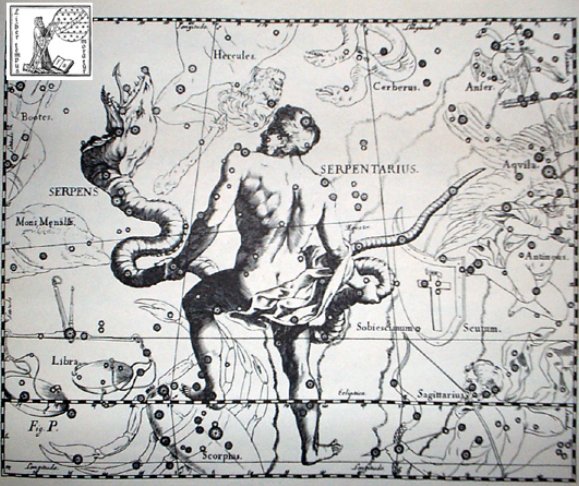
 |
|
 |
 |
 |
 |
|
Eb7-17
(237) |
Eb7-18 (564 = 326 + 238) |
Eb7-19 |
Eb7-20
(240) |
|
te ragi |
te takaure |
te henua |
te takaure |
|
Taka,
takataka.
Circle; to form circles, to gather, to get
together (of people). Vanaga. 1. A dredge. P
Mgv.:
akataka, to fish all day or all
night with the line, to throw the fishing
line here and there. This can only apply to
some sort of net used in fishing. We find in
Samoa ta'ā
a small fishing line, Tonga taka the
short line attached to fish hooks, Futuna
taka-taka a fishing party of women in
the reef pools (net), Maori takā the
thread by which the fishhook is fastened to
the line, Hawaii kaa in the same
sense, Marquesas takako a badly spun
thread, Mangareva takara a thread for
fastening the bait on the hook. 2. Ruddy. 3.
Wheel, arch; takataka, ball,
spherical, round, circle, oval, to roll in a
circle, wheel, circular piece of wood,
around; miro takataka, bush; haga
takataka, to disjoin; hakatakataka,
to round, to concentrate. P Pau.:
fakatakataka, to whirl around. Mq.:
taka, to gird. Ta.: taa, circular
piece which connects the frame of a house.
Churchill. Takai, a curl, to tie;
takaikai, to lace up; takaitakai,
to coil. P Pau.: takai, a ball, to
tie. Mgv.: takai, a circle, ring,
hoop, to go around a thing. Mq.: takai,
to voyage around. Ta.: taai, to make
into a ball, to attach. Churchill.
Ure.
1. Generation; ure matá, warlike,
bellicose generation (matá, obsidian,
used in making weapons). 2. Offspring;
brother; colleague i toou ure ka
tata-mai, your colleague has turned up.
3. Friendship, friendly relationship;
ku-ké-á te ure, they have become enemies
(lit.: friendship has changed). 4. Penis
(this definition is found in Englert's 1938
dictionary, but not in La Tierra de Hotu
Matu'a). Ure tahiri, to gush, to
spurt, to flow; e-ure tahiri-á te toto,
blood is flowing in gushes. Ure
tiatia moana, whirlwind which descend
quickly and violently onto the ocean;
whirlpool, eddy. Vanaga. Penis; kiri ure,
prepuce, foreskin. P Pau., Mgv., Ta.: ure,
penis. Ureure, spiral. Ta.:
aureure, id. Urei, to show the
teeth. Mgv.: urei, to uncover the eye
by rolling back the lids. Churchill. Pau.:
Ureuretiamoana, waterspout. Ta.:
ureuretumoana, id. Churchill. H. Ule
1. Penis. For imaginative compounds see
'a'awa 1, 'aweule, ulehala,
ulehole, ulepa'a, ulepuaa,
ule'ulu. Kū ka ule, he'e ka laho,
the penis is upright, the scrotum runs away
(refers to breadfruit: when the blossom (pōule)
appears erect, there will soon be fruit). 2.
Tenon for a mortise; pointed end of a post
which enters the crotch of a rafter (also
called ma'i kāne). Ho'o ule,
to form a tenon or post for the crotch of a
rafter. 3. To hang. Wehewehe. |
|
INVISIBLY CLOSE TO THE SUN: |
|
May 31
(80 + 71) |
June 1
(152) |
2 |
3 (84 +
70) |
|
TABIT =
π³
Orionis
(71.7),
π²
Orionis (71.9) |
π4
Orionis (72.1),
ο¹
Orionis (72.4),
π5
Orionis (72.8)
*31.0 = *72.4 - *41.4 |
π¹
Orionis (73.0),
ο² Orionis (73.4),
HASSALEH =
ι
Aurigae
(73.6),
π6
Orionis (73.9)
*32.0 = *73.4 - *41.4 |
ALMAAZ (The Male Goat) = ε
Aurigae
(74.7),
HAEDUS I =
ζ
Aurigae
(74.8) |

... The tradition
preserved by Hyginus in his Poetic
Astronomy that the constellation
Capricorn ('He-goat') was Zeus's
foster-brother Aegipan, the Kid of the Goat
Amalthea whose horn Zeus also placed among
the stars, shows that Zeus was born at
mid-winter when the Sun entered the house of
Capricorn ... |
|
→
VISIBLE CLOSE TO THE FULL MOON: |
|
ATRIA = α Tr. Austr.
(253.9)
Nov 29
(152 + 181) |
Tail-6 (Tiger)
WEI (Tail) = ε Scorpii,
η Arae (254.3),
DENEBAKRAB = μ Scorpii
(254.7)
Nov 30 |
ι Ophiuchi (255.3),
GRAFIAS = ζ Scorpii (255.4)
*214.0 = *255.4 - *41.4
Dec 1 |
κ Ophiuchi (256.2), ζ Arae (256.5), ε Arae
(256.8),
CUJAM (Club) = ε Herculi
(256.9)
Dec 2 (336 =
152 + 184) |
 |
... Night came, midnight came,
and Tuu Maheke said to his brother, the
last-born: 'You go and sleep. It is up to me to
watch over the father.' (He said) the same to the
second, the third, and the last. When all had left,
when all the brothers were asleep, Tuu Maheke
came and cut off the head of Hotu A Matua.
Then he covered everything with soil. He hid (the
head), took it, and went up. When he was inland, he
put (the head) down at Te Avaava Maea.
Another day dawned, and the men saw a
dense swarm of flies pour forth and spread out like
a whirlwind (ure tiatia moana) until it
disappeared into the sky.
.jpg)
Tuu Maheke understood. He
went up and took the head, which was already
stinking in the hole in which it had been hidden. He
took it and washed it with fresh water ...

... From a religious point of
view, the high regard for flies, whose increase or
reduction causes a similar increase or reduction in
the size of the human population, is interesting,
even more so because swarms of flies are often a
real nuisance on Easter Island, something most
visitors have commented on in vivid language. The
explanation seems to be that there is a parallel
relationship between flies and human souls, in this
case, the souls of the unborn. There is a widespread
belief throughout Polynesia that insects are the
embodiment of numinous beings, such as gods or the
spirits of the dead, and this concept extends into
Southeast Asia, where insects are seen as the
embodiment of the soul ...
... Then King Matua said to Hotu, 'You must not
forget [he mee o rehu] the flies [te
takaure] when you take along (all the things
that are necessary) and sail off.
If you forget the flies [ana rehu i a koe te
takaure], the multitude (piere) of the
people will disappear [he ngaro]. When you
reach the land [ana tomo ki runga.ki tou kainga]
to which you are travelling [ena koe ka oho],
it will be over quickly (?) for the multitude of the
people. When the flies die [ana moko te ihu o te
takaure], the human population dies too [he
moko tokoa te ihu o tou piere tangata].' [E:57]
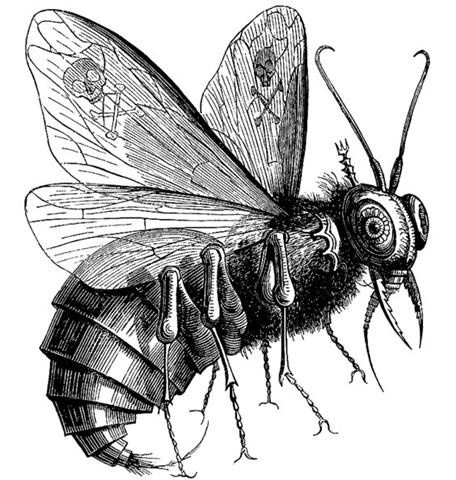
|
 |
 |
 |
 |
 |
|
Eb7-21 |
Eb7-22 (242
→ 11 * 22) |
Eb7-23 |
Eb7-24 |
Eb7-25 (571) |
|
te ragi |
te pepe |
te hau tea - te takaure |
te henua |
te veveke |
|
Pepe.
1. A sketch. 2. Bench, chair, couch,
seat, sofa, saddle; here pepe, mau
pepe, to saddle; noho pepe, a
tabouret. Pepepepe, bedstead. 3.
Pau.: butterfly. Ta.: pepe, id. Mq.:
pepe, id. Sa.: pepe, id. Ma.:
pepe, a moth; pepererau, fin,
Mgv.: pererau, wing. Ta.: pereraru,
id. Ma.: parirau, id. Harepepe,
kelp. Here pepe, to saddle.
Churchill. Sa.: pepe, a butterfly, a
moth, to flutter about. Nukuoro, Fu., Niuē,
Uvea, Fotuna, Nuguria, Ta., Mq.:
pepe, a
butterfly. Ma.: pepe,
a grup, a moth; pepepepe,
a butterfly; pepeatua,
a species of butterfly. To.: bebe,
a butterfly. Vi.: mbèbè,
a butterfly. Rotumā: pep,
id. Churchill 2. Mq.: Pepepepe,
low, flat. Ha.: pepepe, id.
Churchill. Veveke, to
hurry up, hasten, quicken. Websters. |
|
INVISIBLY CLOSE TO THE SUN: |
|
June
4 |
5 (91
+ 65) |
6 (157 →
314 / 2) |
7 |
8 |
|
HAEDUS II = η Aurigae
(75.9) |
5h (*76.1)
ε Leporis (76.0),
CURSA (Footstool) =
β
Eridani (76.4),
λ
Eridani (76.7)
*35.0 = *76.4 - *41.4
Ψ (65) ERIDANI |
μ Aurigae, μ Leporis (77.6) |
ĸ Leporis (78.0),
RIGEL (Foot) =
β
Orionis
(78.1),
Flaming Star = IC405
(78.2),
CAPELLA (Mother Goat) =
α
Aurigae (78.4),
ο
Columbae,
τ
Orionis (78.8)
*37.0 = *78.4 - *41.4
THUBAN (α Draconis) |
λ Aurigae (79.0),
λ Leporis (79.6), ρ Aurigae (79.7) |
|
... That there is a whirlpool in the sky is
well known, it is most probably the
essential one, and it is precisely located.
It is a group of stars so named (zalos)
at the foot of Orion, close to Rigel (beta
Orionis, Rigel being the Arabic word for
'foot'), the degree of which was called
'death', according to Hermes Trismegistos,
whereas the Maori claim outright that Rigel
marked the way to Hades (Castor indicating
the primordial homeland) ...

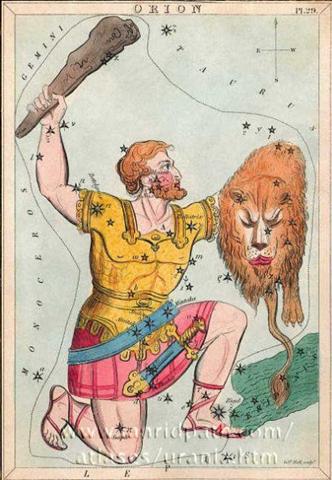
... A man had a daughter
who possessed a wonderful bow and arrow,
with which she was able to bring down
everything she wanted. But she was lazy and
was constantly sleeping. At this her father
was angry and said: 'Do not be always
sleeping, but take thy bow and shoot at the
navel of the ocean, so that we may get fire.'
The navel of the ocean
was a vast whirlpool in which sticks for
making fire by friction were drifting about.
At that time men were still without fire.
Now the maiden seized her bow, shot into the
navel of the ocean, and the material for
fire-rubbing sprang ashore. Then the old man
was glad. He kindled a large fire, and as he
wanted to keep it to himself, he built a
house with a door which snapped up and down
like jaws and killed everybody that wanted
to get in. But the people knew that he was
in possession of fire, and the stag
determined to steal it for them. He took
resinous wood, split it and stuck the
splinters in his hair. Then he lashed two
boats together, covered them with planks,
danced and sang on them, and so he came to
the old man's house. He sang: 'O, I go and
will fetch the fire.' The old man's daughter
heard him singing, and said to her father:
'O, let the stranger come into the house; he
sings and dances so beautifully.' The stag
landed and drew near the door, singing and
dancing, and at the same time sprang to the
door and made as if he wanted to enter the
house. Then the door snapped to, without
however touching him. But while it was again
opening, he sprang quickly into the house.
Here he seated himself at the fire, as if he
wanted to dry himself, and continued
singing. At the same time he let his head
bend forward over the fire, so that he
became quite sooty, and at last the
splinters in his hair took fire. Then he
sprang out, ran off and brought the fire to
the people .. |
|
→
VISIBLE CLOSE TO THE FULL MOON: |
|
No star listed (257)
Dec 3
(337) |
17h (*258.7)
ARRAKIS = μ Draconis
(258.7)
Dec 4
(= 20 - 16) |
Mula-19 (The Root)
SABIK (The Preceding One) =
η
Ophiuchi
(259.7),
η
Scorpii (259.9)
Dec 5 |
NODUS I = ζ Draconis (260.0),
π
Herculis (260.7),
RAS ALGETHI =
α
Herculis
(260.8)
Dec 6 |
SARIN = δ Herculis (261.0),
ο Ophiuchi (261.4)
*220.0 = *261.4 - *41.4
ALRISHA (α Piscium)
Dec 7 |

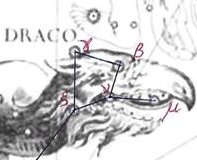 |
... In view of the almost
universal prevalence of the Pleiades year throughout
the Polynesian area it is surprising to find that in
the South Island and certain parts of the North
Island of New Zealand and in the neighboring Chatham
Islands, the year began with the new Moon after the
yearly morning rising, not of the Pleiades, but of
the star Rigel [*78] in Orion
...
|
 |
 |
 |
|
Eb7-26
(572) |
Eb7-27 |
Eb7-28
(248) |
|
te henua |
te vaha |
tagata - te kihikihi |
|
Kihi. Kihikihi,
lichen; also: grey, greenish grey, ashen.
Vanaga. Kihikihi, lichen T, stone T.
Churchill. The Hawaiian
day was divided in three general parts, like
that of the early Greeks and Latins, -
morning, noon, and afternoon - Kakahi-aka,
breaking the shadows, scil. of night;
Awakea, for Ao-akea, the plain
full day; and Auina-la, the decline
of the day. The
lapse of the night, however, was noted by
five stations, if I may say so, and four
intervals of time, viz.: (1.) Kihi,
at 6 P.M., or about sunset; (2.) Pili,
between sunset and midnight; (3) Kau,
indicating midnight; (4.) Pilipuka,
between midnight and surise, or about 3
A.M.; (5.) Kihipuka, corresponding to
sunrise, or about 6 A.M. ... (Fornander)
|
|
INVISIBLY CLOSE TO THE SUN: |
|
June 9 |
10 (161= 354 / 2 - 16) |
11 (84 + 78) |

... Midsummer is the flowering season of the oak,
which is the tree of endurance and triumph, and like
the ash is said to 'court the lightning flash'. Its
roots are believed to extend as deep underground as
its branches rise in the air - Virgil mentions this
- which makes it emblematic of a god whose law runs
both in Heaven and in the Underworld ... The month,
which takes its name from Juppiter the oak-god,
begins on June 10th and ends of July 7th. Midway
comes St. John's Day, June 24th, the day on which
the oak-king was sacrificially burned alive. The
Celtic year was divided into two halves with the
second half beginning in July, apparently after a
seven-day
wake, or funeral feast, in the oak-king's honour
... |
|
Shur-narkabti-sha-iltanu-5 (Star in the Bull towards the north)
σ Aurigae (80.4),
BELLATRIX (Female Warrior) = γ Orionis, SAIF AL JABBAR (Sword of
the Giant) = η Orionis (80.7),
ELNATH (The Butting One) =
β
Tauri =
γ
Aurigae
(80.9)
*39.0 =
*41.0 - *2.0 = *221.0 - *182.0 |
ψ
Orionis (81.1),
NIHAL (Thirst-slaking Camels) = β Leporis (81.7) |
KHUFU
MINTAKA (Belt) =
δ Orionis,
υ Orionis (82.4),
χ
Aurigae (82.5),
ε
Columbae (82.6)
*41.0 = *82.4 -
*41.4
→ 41 Arietis (Bharani) |
|
→
VISIBLE CLOSE TO THE FULL MOON: |
|
ξ Ophiuchi (262.2),
θ Ophiuchi, ν Serpentis, ζ, ι Apodis (262.4),
ι Arae (262.8), ρ Herculis (262.9)
*221.0 = *262.4 - *41.4 Dec 8 |
β, γ Arae (263.3), κ Arae (263.5), σ Ophiuchi (263.6)
Dec 9 |
LESATH (Sting) =
υ (325) Scorpii,
δ
Arae (264.7),
CHOO (Club) =
α
Arae
(264.9)
Dec 10 (344 = 360 - 16 =
80 + 324) |
|
Notably we have to distinguish between
ν Scorpii
and υ Scorpii, both of
which were named Lesath:
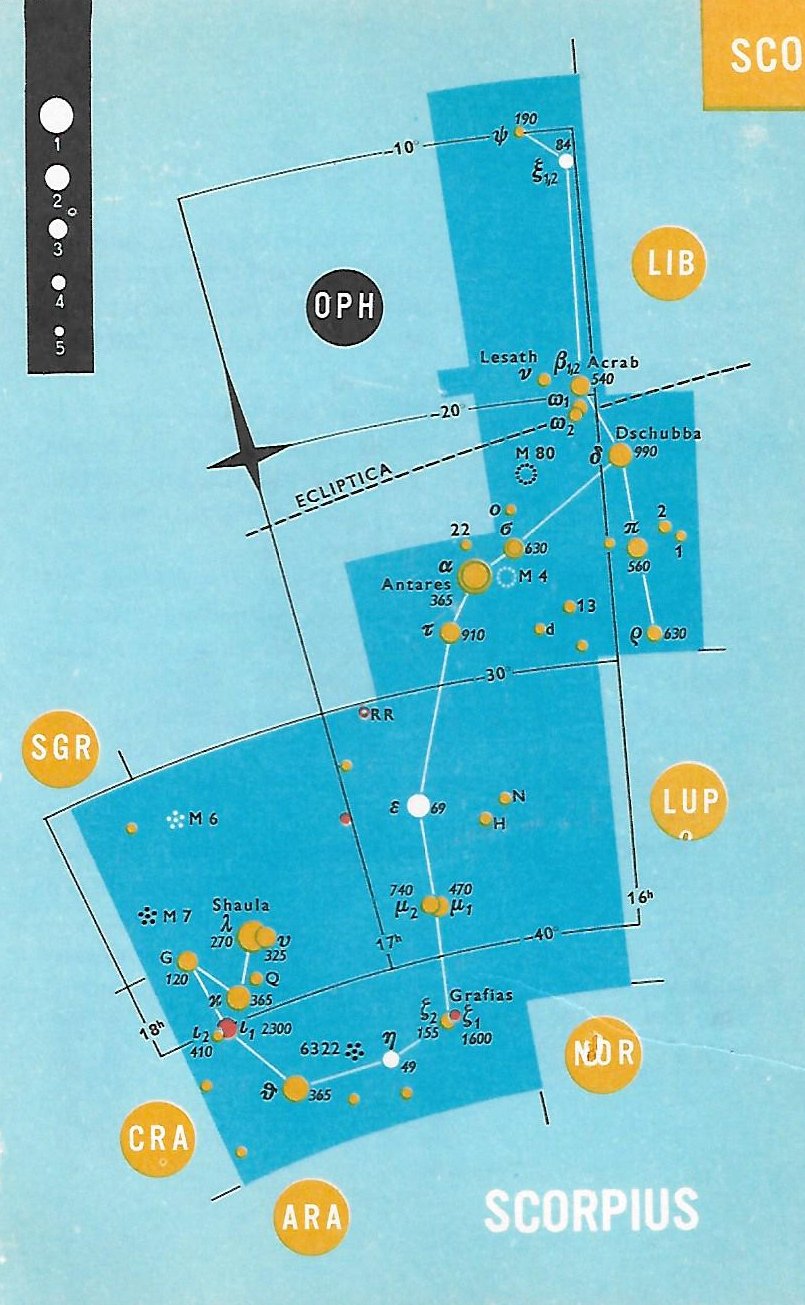 |
The beginning of the month of Jupiter was June
10. We can therefore assume that the binome for June
9-10:
 
did not refer to Aldebaran but to something quite
similar. For in the G text we have compared MARCH
24-25:
  with
Polaris and the First Point of Aries ('March 20-21)
 
I suggest the primary occasion was when the Sun
reached El-nath, the star which was both a part of
Taurus and of Auriga:
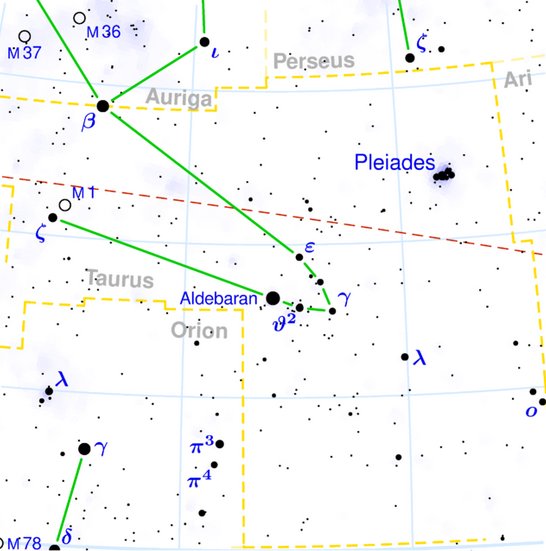
|
 |
 |
*12 |
 |
 |
|
NIHAL
(→
3 *
27) |
ELNATH (*80) |
ALDEBARAN |
MARCH
24 |
|
June
10 (161) |
*80 =
*68 ´*12 |
May
28 (148) |
*67 =
*27 + *40 |
|
*40 |
 |
 |
|
SHERATAN |
POLARIS
(*26) |
|
*27 =
*81 - *54 |
April
16 (106) |

|






.jpg)










